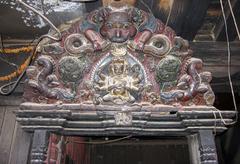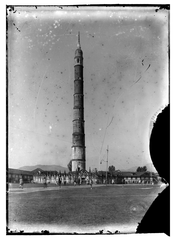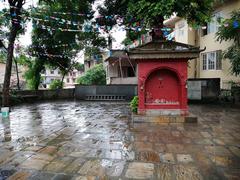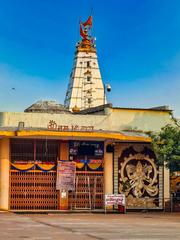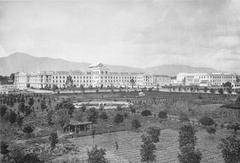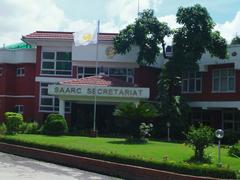Comprehensive Guide to Visiting Patan Museum, Kathmandu, Nepal
Date: 23/07/2024
Introduction
Nestled in the historic Patan Durbar Square in the Kathmandu Valley, the Patan Museum stands as a testament to Nepal’s rich cultural and architectural heritage. Housed within a section of the ancient royal palace of the Malla kings, this museum is part of a UNESCO World Heritage Site celebrated for its exquisite Newari architecture (UNESCO). The museum occupies the Keshav Narayan Chowk, a courtyard constructed in the 17th century during the reign of King Siddhi Narsingh Malla. The architectural style of the museum is a fusion of traditional Newari craftsmanship and influences from the Indian subcontinent, reflecting the region’s cultural syncretism.
The transformation of Keshav Narayan Chowk into the Patan Museum began in the early 1990s, with a collaborative effort between the Government of Nepal and the Austrian Government, under the guidance of Austrian Art Historian, Götz Hagmüller. The restoration aimed to preserve the historical integrity of the building while adapting it for modern use as a museum. The project was completed in 1997, and the museum was officially opened to the public in 1999 (Austrian Development Agency).
Today, the Patan Museum houses over 1,500 artifacts, primarily focusing on the art and culture of the Kathmandu Valley, with significant emphasis on the religious art of Hinduism and Buddhism. The museum serves not only as a repository of historical artifacts but also as a center for cultural education and preservation, offering guided tours, workshops, and lectures to promote an understanding of the region’s rich cultural heritage (Patan Museum).
In addition to its educational initiatives, the museum plays a crucial role in preserving traditional crafts. The museum’s conservation laboratory is equipped with state-of-the-art facilities for the restoration and preservation of artifacts, ensuring that these cultural treasures are safeguarded for future generations (Nepal Heritage Society).
Table of Contents
- Origins and Architectural Significance
- Restoration and Transformation
- Collections and Exhibits
- Cultural and Educational Significance
- Impact of the 2015 Earthquake
- Visitor Experience
- Practical Information
- FAQ
Origins and Architectural Significance
The Patan Museum is housed in a section of the ancient royal palace of the Malla kings of the Kathmandu Valley. The palace complex, known as the Patan Durbar Square, is a UNESCO World Heritage Site and is renowned for its stunning Newari architecture. The museum itself occupies the Keshav Narayan Chowk, which dates back to the 17th century. This courtyard was originally constructed during the reign of King Siddhi Narsingh Malla (1619-1661) and later expanded by his successors. The architectural style is a blend of traditional Newari craftsmanship and influences from the Indian subcontinent, making it a unique example of the region’s cultural syncretism (UNESCO).
Restoration and Transformation
The transformation of the Keshav Narayan Chowk into the Patan Museum began in the early 1990s. The restoration project was a collaborative effort between the Government of Nepal and the Austrian Government, with significant contributions from the Austrian Art Historian, Götz Hagmüller. The project aimed to preserve the historical integrity of the building while adapting it for modern use as a museum. The restoration was completed in 1997, and the museum was officially opened to the public in 1999. The meticulous restoration work has been praised for its attention to detail and respect for the original architectural elements (Austrian Development Agency).
Collections and Exhibits
The Patan Museum’s collection primarily focuses on the art and culture of the Kathmandu Valley, with a particular emphasis on the religious art of Hinduism and Buddhism. The museum houses over 1,500 artifacts, including bronze and copper statues, wood carvings, and traditional crafts. Many of these artifacts date back to the Licchavi period (4th to 9th century) and the Malla period (12th to 18th century), offering a comprehensive overview of the region’s artistic heritage.
One of the museum’s most notable exhibits is the collection of bronze sculptures, which includes masterpieces such as the 12th-century statue of Avalokiteshvara and the 17th-century statue of Vishnu. These sculptures are celebrated for their intricate detailing and craftsmanship, reflecting the high level of skill possessed by Newari artisans (Patan Museum).
Cultural and Educational Significance
The Patan Museum serves not only as a repository of historical artifacts but also as a center for cultural education and preservation. The museum offers a range of educational programs, including guided tours, workshops, and lectures, aimed at promoting an understanding of the region’s rich cultural heritage. These programs are designed to engage both local communities and international visitors, fostering a greater appreciation for the art and history of the Kathmandu Valley.
In addition to its educational initiatives, the museum plays a crucial role in the preservation of traditional crafts. The museum’s conservation laboratory is equipped with state-of-the-art facilities for the restoration and preservation of artifacts, ensuring that these cultural treasures are safeguarded for future generations (Nepal Heritage Society).
Impact of the 2015 Earthquake
The 2015 earthquake in Nepal caused significant damage to many historical sites in the Kathmandu Valley, including the Patan Durbar Square. However, the Patan Museum itself suffered relatively minor damage, thanks in part to the robust restoration work carried out in the 1990s. The museum was temporarily closed for repairs and reopened to the public in 2016. The earthquake underscored the importance of ongoing preservation efforts and highlighted the resilience of traditional Newari architecture (National Geographic).
Visitor Experience
Visitors to the Patan Museum can explore its extensive collections through a series of well-curated galleries, each dedicated to different aspects of the region’s art and culture. The museum’s layout is designed to provide a chronological journey through the history of the Kathmandu Valley, with informative displays and interactive exhibits enhancing the visitor experience.
The museum also features a beautiful garden and a café, offering a tranquil setting for visitors to relax and reflect on their visit. The museum shop sells a range of high-quality souvenirs, including replicas of artifacts and traditional crafts, allowing visitors to take a piece of Nepalese culture home with them (Lonely Planet).
Practical Information
The Patan Museum is open daily from 10:30 AM to 5:30 PM, with extended hours during the peak tourist season. Tickets to the Patan Museum are modestly priced, with discounts available for students and senior citizens. The museum is easily accessible by public transport, and guided tours are available in multiple languages. Visitors are encouraged to check the museum’s official website for the latest information on exhibitions and events (Patan Museum).
FAQ
What are the Patan Museum visiting hours?
The Patan Museum is open daily from 10:30 AM to 5:30 PM.
How much are the Patan Museum tickets?
Ticket prices are modest, with discounts available for students and senior citizens. Check the official website for the most current pricing.
What can you see at the Patan Museum?
The museum houses over 1,500 artifacts, including bronze and copper statues, wood carvings, and traditional crafts, focusing mainly on the religious art of Hinduism and Buddhism.
Is the Patan Museum accessible by public transport?
Yes, the museum is easily accessible by public transport.
Are guided tours available at the Patan Museum?
Yes, guided tours are available in multiple languages.
Conclusion
The Patan Museum is a profound symbol of the Kathmandu Valley’s rich cultural heritage, offering an immersive experience into the art, history, and traditions of Nepal. The meticulously restored Keshav Narayan Chowk, where the museum is housed, stands as a testament to the enduring beauty of Newari architecture and craftsmanship. The museum’s vast collection, which spans centuries, provides a comprehensive overview of the region’s artistic and spiritual evolution, making it an invaluable resource for both locals and international visitors.
Despite the challenges posed by the 2015 earthquake, the museum has demonstrated remarkable resilience, reopening its doors to continue its mission of cultural preservation and education. The Patan Museum’s role extends beyond being a mere repository of artifacts; it actively engages the community through educational programs, workshops, and guided tours, fostering a deeper appreciation for Nepalese culture (National Geographic).
With its strategic location in Patan Durbar Square, a UNESCO World Heritage Site, the museum also serves as a gateway to exploring other nearby historical and cultural attractions. Whether you are a history enthusiast, an art lover, or a curious traveler, a visit to the Patan Museum promises a rich and enlightening experience, offering insights into the intricate tapestry of Nepal’s cultural heritage. For the latest updates on exhibitions and events, be sure to visit the official Patan Museum website.
